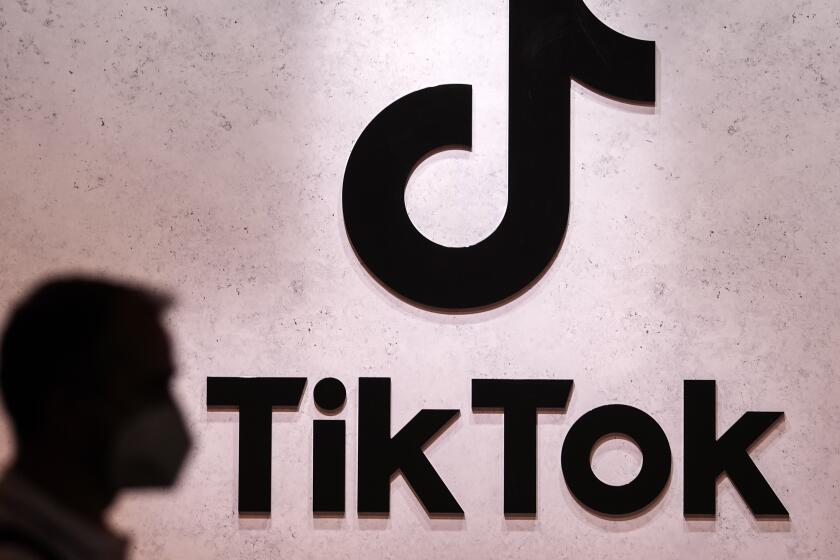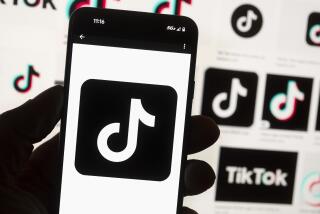Opinion: The TikTok court case has staggering implications for free speech in America

The free speech implications of the coming ban on TikTok in the United States are staggering and unprecedented. On Friday, the U.S. Court of Appeals for the District of Columbia Circuit upheld a federal law that requires TikTok to stop operating here on Jan. 19 if its owner, ByteDance, does not sell it to a non-Chinese company. The 150 million Americans who use TikTok to share and receive information no longer would be able to do so.
In upholding the law, D.C. Circuit Court of Appeals minimized the 1st Amendment impact of banning TikTok, while uncritically accepting the federal government’s claim that national security is threatened by this app.
This is the first time in history that the government has ever banned a medium of communication. It is not simply outlawing a single newspaper or publisher, which itself would be deeply troubling under the 1st Amendment, but banning a platform on which billions of videos are uploaded a year. As the circuit court’s chief judge, Sri Srinivasan, said in a concurring opinion, the TikTik ban will cause a huge number of people in this country to “lose access to an outlet for expression, a source of community and even a means of income.”
The accumulation of data from millions of Americans by the Chinese-owned social media platform TikTok is at the center of a congressional push to ban the app.
The decision stressed that TikTok is controlled by a “foreign adversary,” the People’s Republic of China, and that those outside the United States do not have 1st Amendment rights. But this ignores the rights of millions of users of TikTok in this country to post on the site and to receive information. Moreover, the Supreme Court has long made clear that the identity of a speaker should not matter under the 1st Amendment. This was the basis for the court’s Citizens United holding that corporations have the right to spend unlimited amounts in election campaigns. The central premise of the 1st Amendment is that more speech is inherently better, regardless of the source.
The court of appeals recognized the free speech implications of the TikTok ban but concluded the ban was justified by national security considerations. In doing so, the court professed the need to give great “deference” to the government and its “evaluation of the facts” concerning TikTok.
The circuit court identified two national security concerns. First, that China would use TikTok to “collect data of and about persons in the United States.” There is no dispute that China does this, but the question the court does not answer is how these data can be used to harm national security. The court points to China being able to mine the data for “commercial” benefits, but this seems quite different from showing that China can gain a national security advantage from knowing what Americans upload and watch on TikTok.
The second rationale given by the court is even more problematic: China will “covertly manipulate content on TikTok” to “undermine democracy” and “extend the PRC’s influence abroad.” The court said that China “threatens to distort free speech on an important medium of communication.”
The U.S. Court of Appeals ruled against TikTok’s request to strike down a law banning the app or forcing its divestiture. Legal experts expect TikTok will appeal.
Under this rationale, the United States could ban a foreign newspaper or a book published in another country from being available in this country because it is seen as undermining democracy. Indeed, this justification would allow the federal government to prohibit any book published by the Chinese government because it could be deemed an effort to “extend the PRC’s influence” in the United States. The government never should have the power to censor speech because it dislikes the message expressed.
There are still several paths to saving TikTok in the United States. There certainly will be an appeal to the Supreme Court. The justices could grant review on an expedited basis and decide the case by Jan. 19, or they could temporarily keep the law from going into effect until they hear and resolve the issue by the end of the court’s term in late June. The case demands Supreme Court attention because of the unique and important issues raised. Of course, it is uncertain whether the justices will look at the law any differently than the federal court of appeals judges. There is a long history of judicial deference to the government when it raises national security as the justification for its action.
Another possibility is for President-elect Donald Trump to try to save TikTok once he is inaugurated, the day after the TikTok ban is scheduled to go into effect. Trump has explicitly said he wants to do this, but it is unclear how he could accomplish it. He cannot repeal the law banning TikTok; that would take an act of Congress. He could direct the Department of Justice to not enforce the law. But it is doubtful that would be enough assurance for companies like Apple and Google to continue to make the TikTok app available knowing of the potential liability for doing so. If there is a sale or restructuring of the ownership of TikTok, Trump, under the law, can deem it no longer to be under foreign control and allow it to continue to operate. If a deal is in the works, the president can grant a one-time 90-day extension before the ban goes into effect.
It seems highly unlikely that the Chinese government would accede to selling or restructuring TikTok. And its cost is astronomical: about $200 billion.
The TikTok case is a difficult one involving issues never before faced by the courts. Yet when the implications for speech are so massive and the justifications for the restrictions so speculative, the only conclusion is that the D.C. Circuit struck the wrong balance. The Supreme Court should correct it.
Erwin Chemerinsky, a contributing writer to Opinion, is dean of the UC Berkeley Law School.
More to Read
A cure for the common opinion
Get thought-provoking perspectives with our weekly newsletter.
You may occasionally receive promotional content from the Los Angeles Times.












